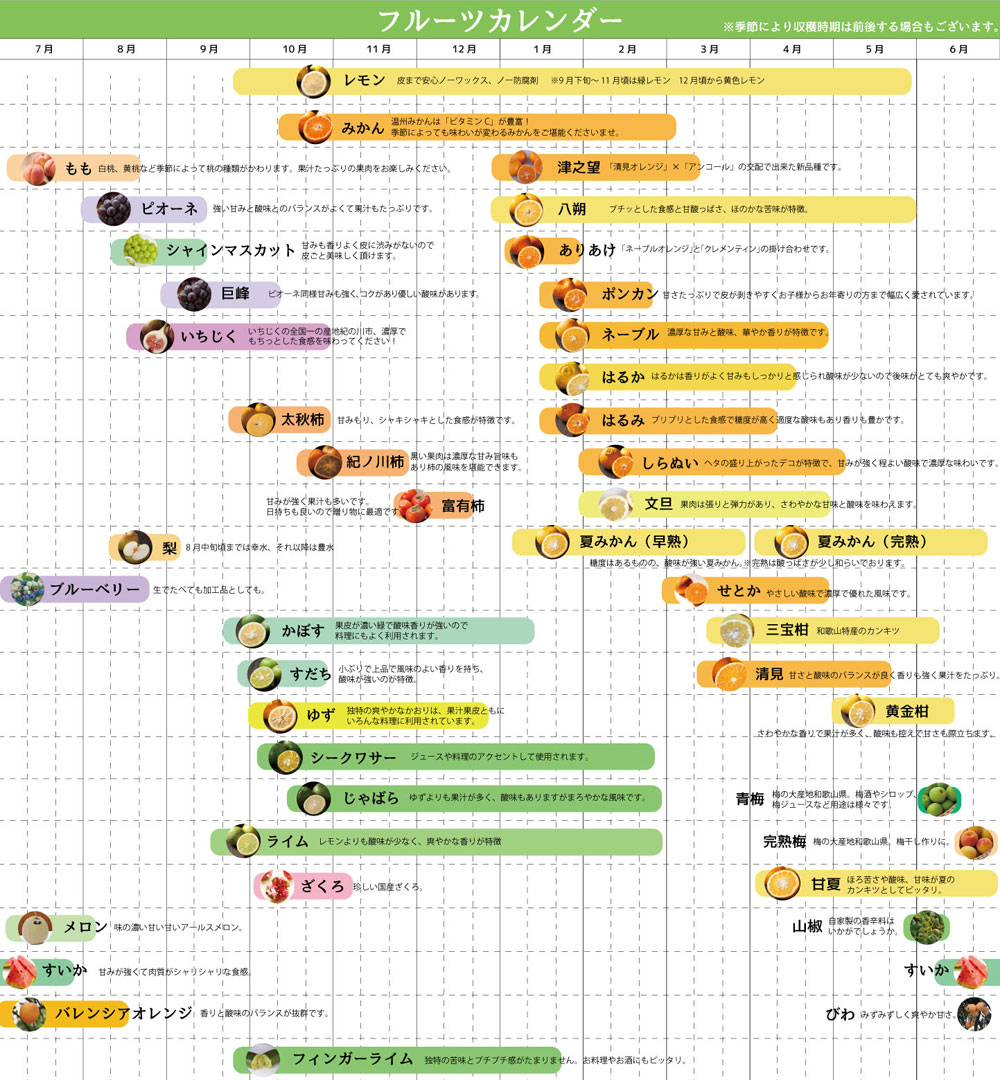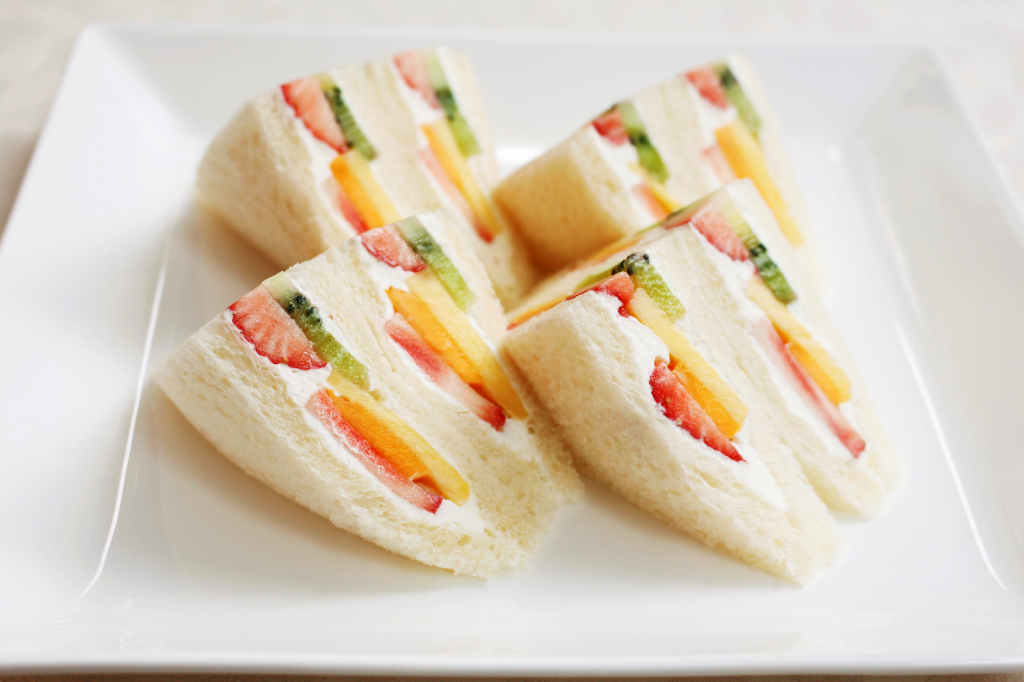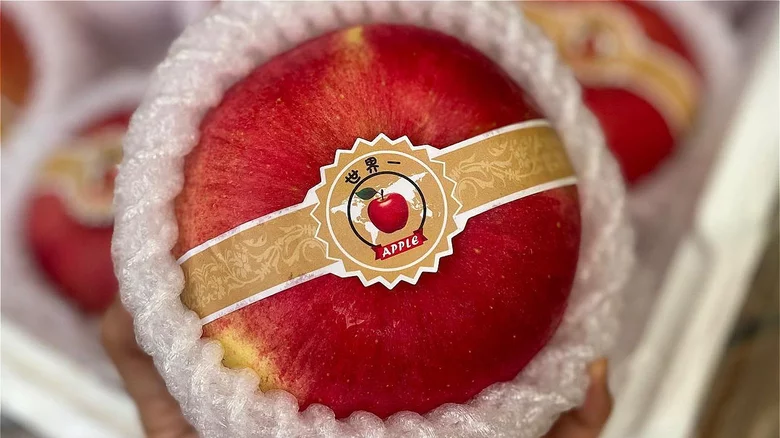Japan’s seasonal fruits are not only a treat for the taste buds but also an integral part of the country’s rich culinary culture. Each month brings a unique offering that showcases the best of what nature has to offer. Here’s a guide to the best fruit to eat each month in Japan and where you can find them in Tokyo.

January: Strawberries (Ichigo)
January is the peak season for strawberries in Japan. The strawberry season in Japan is during the winter and spring, from the beginning of winter in December to the end of spring in May. Japanese strawberries, known for their sweetness and perfect shape, are a winter delight. Varieties like “Amaou” and “Tochiotome” are particularly popular.

Where to Get It:
Kannonyama Fruits Parlor Ginza
Kannonyama Fruits Parlor offers high-quality strawberries directly sourced from their farm in Wakayama Prefecture. Enjoy fresh strawberries in their purest form or as part of delectable parfaits and desserts.
Instagram: https://www.instagram.com/kannonyama.ginza/
Address: 4-10-5 Ginza, Chuo-ku, Tokyo 104-0061 (Tokyu Stay Ginza 1st floor)
February: Mikan (Mandarin Oranges)
February is the perfect time to enjoy mikan. These easy-to-peel oranges are sweet, juicy, and packed with Vitamin C, making them a favorite winter snack. Mandarin orange season is in winter. Farmers often harvest mikan from October to the end of winter in February of the next year. Japanese people often eat mikan as snack or dessert while sitting under the kotatsu, and you may have seen those scenes in mangas or animes.

Where to Get It:
Tsukiji Outer Market
While Tsukiji is famous for its seafood, the outer market offers a variety of fresh produce, including mikan from different regions of Japan. Can join the half day tour on Klook (with code CHARLOT for 10% off)
Address: 〒104-0045 Tokyo, Chuo City, Tsukiji, 4 Chome−16−2
March: Dekopon
Dekopon, a type of seedless mandarin orange, is at its best in March. This Japanese fruit is a hybrid of a mandarin and an orange. It’s larger and sweeter than a usual orange and is supposedly the most delicious citrus in the world. It’s also seedless, making it easier to eat and harder to cultivate. It’s known for its large size, sweet flavor, and juicy flesh.


Where to Get It:
Sembikiya Fruit Parlor
Located in Nihonbashi, Sembikiya is Japan’s oldest fruit parlor and is renowned for its premium fruit selection, including top-grade dekopon.
Instagram: https://www.instagram.com/nihombashi_sembikiya_official/
Address: 〒103-0027 Tokyo, Chuo City, Nihonbashimuromachi, 2 Chome−1−2
April: Mango
Mangoes in Japan, especially the “Taiyo no Tamago” variety from Miyazaki, are incredibly sweet, juicy, and aromatic. This mango’s name means “Egg of the Sun,” and they are worthy of such an extravagant title. Each egg of the sun mango must weigh 350 grams, have a sugar content of 15 percent or more, and have at least half of its color be a deep red. April is the perfect month to enjoy these tropical delights.

Where to Get It:
Takano Fruit Parlour
This well-known fruit parlor in Shinjuku is famous for its premium fruit selections and offers delicious mangoes during the summer months.
Address: 〒160-0022 Tokyo, Shinjuku City, Shinjuku, 3 Chome−26−11
May: Cherries (Sakuranbo)
Japanese cherries, especially the Sato Nishiki variety, are a summer favorite. They are known for their sweet, juicy, and slightly tart flavor. Japanese cherries have bright red (though some are yellow), glossy, shiny skin and a subtle sweet and sour taste. Japanese cherries can’t be kept long, and the cherry season only lasts around 2 to 3 months in the first half of summer, from around May to July every year.

Where to Get It:
Takano Fruit Parlour
This renowned fruit parlor in Shinjuku offers high-quality cherries during the cherry season.
Address: 〒160-0022 Tokyo, Shinjuku City, Shinjuku, 3 Chome−26−11
June: Apples (Ringo)
June marks the start of apple season in Japan. Japanese apples, like the Fuji variety, are crisp, juicy, and known for their sweet flavor. Another one I would like to talk about is the “Sekai Ichi” apple. “Sekai Ichi” means “the best in the world,” at $20 each, measuring around 15 inches and weighing a hefty 2 pounds each, boasts a peel with a distinct crimson tinge reminiscent of the classic apple aesthetic, giving it a perfectly beautiful appearance. Farmers wash the apples in honey before going on sale, several times the size of ordinary apples.

Where to Get It:
Tokyo Metropolitan Central Wholesale Market
This market offers a wide variety of fresh fruits, including premium apples, perfect for enjoying in early summer.
Address: 〒135-0061 Tokyo, Koto City, Toyosu, 6 Chome−6−1
July: Pear (Nashi)
Nashi pears are crisp, juicy, and sweet, making them a refreshing summer fruit. They are larger and rounder than Western pears.
Where to Get It:
Sun Fruits
Located in Ginza, Sun Fruits is an upscale fruit boutique that offers a wide selection of premium fruits, including nashi pears.
Address:
〒104-0061 Tokyo, Chuo City, Ginza, 6 Chome−10−1
August: Peach (Momo)
August is the peak season for Japanese peaches, known for their juiciness, sweetness, and delicate aroma. Varieties like Hakuto are particularly cherished.

Where to Get It:
Initial NakameguroThis spacious café just off the Meguro River always has at least five to ten parfaits on the menu including the signature Strawberry Zukushi that uses plenty of Hokkaido’s famous Yotsuboshi strawberries, which are known for their perfect balance of sweetness and tanginess. When strawberries aren’t in season, you can try out some of the other sweet concoctions that range from towering parfaits topped with shine muscat and kyoho grapes to parfaits featuring an entire peach and Hokkaido milk soft serve ice cream.
Instagram: https://www.instagram.com/initial_nakameguro/?hl=en
Address: Natural Square Bldg., 1-chōme-16-6 Kamimeguro, Meguro City, Tokyo 153-0051, Japan
September: Grapes
September is the peak season for Japanese grapes, including varieties like Kyoho and Shine Muscat, which are known for their large size, sweetness, and rich flavor.

Where to Get It:
The living
This extravagant parfait parlour is tucked away in a quiet residential neighbourhood, but is well-worth the hunt if you’re a serious dessert eater. Parfaits are created by a well-established pastry chef who has 19 years at the New Otani under his belt. The menu centres around whatever fruit is in season and it’s all sourced from the nearby Ota Market, which specialises in fruits and veggies. Both individual parfaits or larger ones for sharing are available. Your jaw may drop when you see the sheer size of the large parfaits. On our recent visit, our towering creation came out topped with a mountain of grapes including shine muscat and the rare Nanago purple.
Address: 1-19-5 Chidori, Ota: Tokyo
October: Watermelon (Suika)
Nothing beats the heat like a refreshing watermelon. October is the peak season for suika in Japan, which comes in various shapes and sizes.
Where to Get It:
Kaju Aoyama
This fruit shop in Aoyama specializes in high-quality, seasonal fruits, including perfectly ripe watermelons.
Address:
〒150-0001 Tokyo, Shibuya City, Jingumae, 3 Chome−17−6
November: Honeydew Melon
Honeydew melon and musk melon are at their best in November. These melons are sweet, juicy, and incredibly refreshing.

Where to Get It:
Kinachi cafeKihachi Cafe has the perfect suggestion with its new Muskmelon and White Wine Jelly Parfait.
.Address: various
December: Cantaloupe
December is a great time to enjoy muskmelons, known for their sweet aroma and deliciously juicy flesh.Where to Get It:
Patisserie Sadaharu Aoki
While primarily known for its pastries, this renowned patisserie also features exquisite desserts using seasonal fruits, including muskmelons.
Address: 〒107-0062 Tokyo, Minato City, Minamiaoyama, 5 Chome−10−1
Exploring Japan’s seasonal fruits is a delightful journey that offers a taste of the country’s rich agricultural heritage. Each month brings a new fruit to savor, and Tokyo’s various specialty shops and markets provide the perfect venues to enjoy these natural treasures.
Happy fruit hunting!




